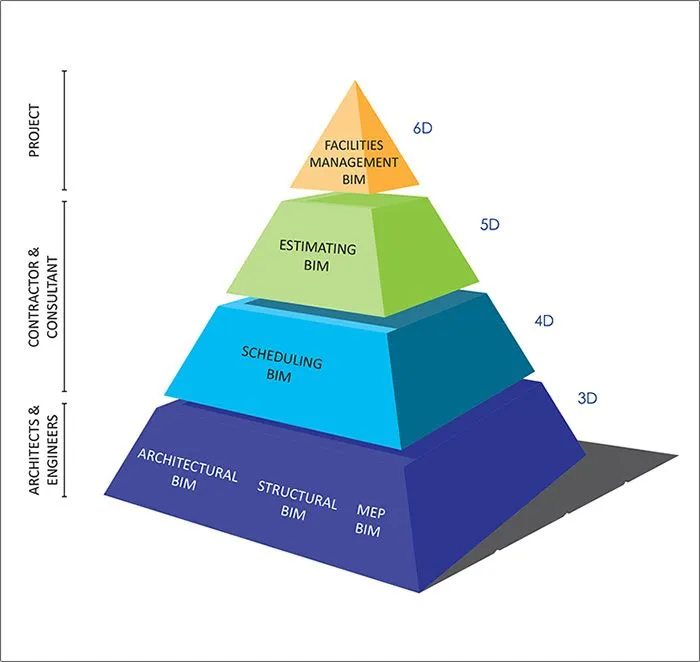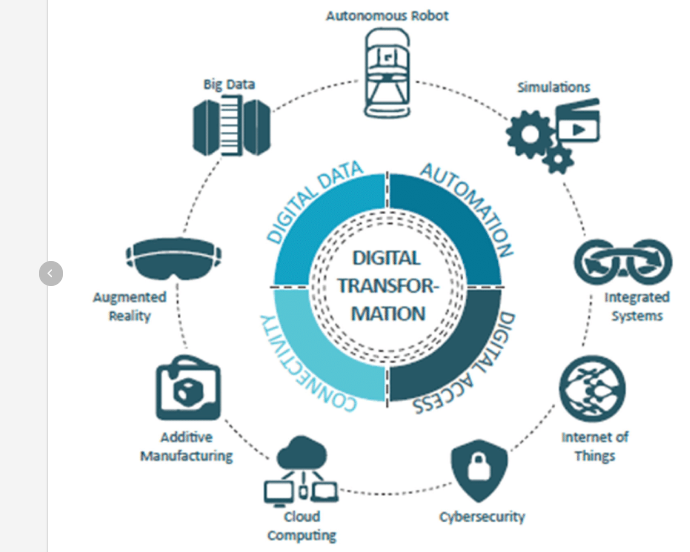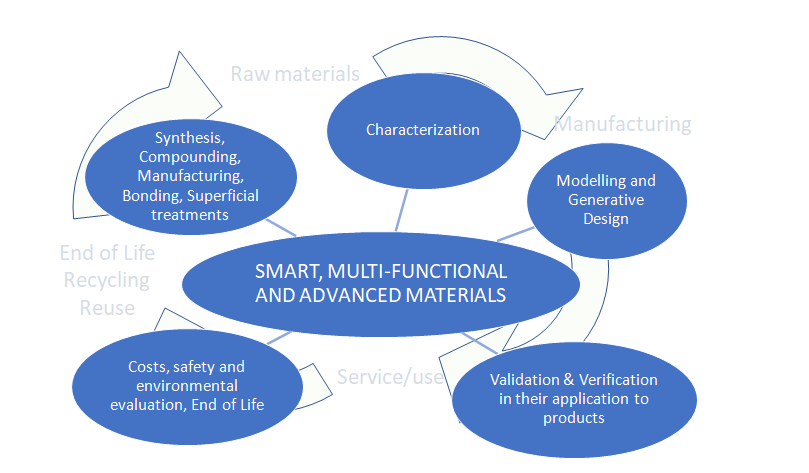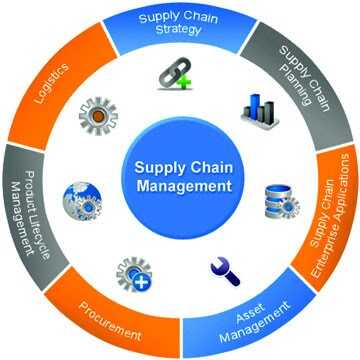There are different factors are there on which the success of projects depends. Among these factors, the management of the project is very important. It is because this involves using the different forms of resources accurately. Hence, it becomes the most critical thing for projects. The management of a project becomes very important for construction projects. The main reason behind this is the potential for loss of resources as compared to the projects of the other industries. In this research, the main focus is on managing construction projects. It can be observed that there are different types of technologies used in managing “construction projects”. This is changing continuously with the rapid changes in technologies. Among these technologies, some of the prominent technologies are BIM, AR & VR. These are the new forms of technologies that are getting popular in projects. There are different kinds of benefits of using these methods can be observed. There are many “similarities & dissimilarities” that exist in these methods. Despite this, it can be seen that these technologies help manage “construction projects” in several ways. In this research, the details of these technologies were evaluated and the applications of these in the projects were analyzed here.
It is to be noted that every research has its reason to start. The reason sets the approach of the research. It is also helpful in identifying the kind of result that is expected from the research. This research is based on the management of a “construction” project. It can be seen that there are different factors are there that decide the success of a project. Among these factors, one of the most important ones is how the project is managed. Here, managing refers to the management of all forms of resources that are going to be used in the project. Moreover, managing the time of the project is another critical thing to perform (Ghanem, 2022). It is because based on the time the cost of projects varies rapidly. From all of these, it can be noticed that managing projects can provide a project several benefits. For this reason, it can be seen that there are different approaches applied to managing “construction projects”. These methods have been used in projects for a long time. However, in the current days with the development of new technologies, it can be observed that new & modern methods are taking the place of traditional methods of managing projects (Elshafey et al. 2020). These new technologies are gaining popularity because of their several benefits. Among these BIM, AR & VR are the most prominent technologies. Hence, it is required to do research on these technologies and find out what are the benefits of them from projects and how to implement these technologies in the projects.
Get assistance from our PROFESSIONAL ASSIGNMENT WRITERS to receive 100% assured AI-free and high-quality documents on time, ensuring an A+ grade in all subjects.
This research aims to find out how the management of construction projects can become digital with the use of digital tools such as BIM, AR, and VR.
The objectives that this research are written below.
Get expert Help with My Assignment on BIM, AR, and VR technologies. Our professionals provide in-depth analysis, ensuring you understand the impact of digital tools on project efficiency, accuracy, and collaboration. Let us guide you through the complexities of modern construction management.
The growth in the Technological sector has enhanced several Digital Technologies for example Building Information Modeling particularly known as (BIM), (AR) which is specifically known as Augmented reality and (VR) which stands for Virtual Reality are highly transforming architectural works. (AEC) that stands for Architectural, Engineering and Construction Industry is highly enhanced after the utilization of this type of technologies into it. The perfect utilization of this type of technology aims to improve the overall project insight, efficiency, productivity and collaboration. This Literature Review portion analyses the current research on the digital transformation which occurs during construction project management through the overall implementation of BIM, VR and AR. It also aims to provide a background towards the theoretical view of digital transformation and structural frameworks. It also consists of several different theories and models that largely impact on the adoption of several different technologies. Along with it, this also outlines several key dependent variables and independent variables that are identified from the literature largely influenced by the adoption and project outcomes from VR, AR and BIM.
According to Albahbah et al. 2021, the main principle of “Augmented Reality (AR)” is to combine the content available in digital form to merge with the actual world. In this way, the experience of the users can be enhanced. There are some dissimilarities of this with the “Virtual Reality (VR)”. In AR, the technologies are used in the existing environment for the development of the environment (Albahbah et al. 2021). The main tools that are used here are gadgets like mobiles, cameras, & sensors. These are the tools that capture the environment and merge them into the “augmented view”. It is very much helpful in managing projects. In the field of construction, the use of this technology is increasing rapidly. This can help manage products.

Figure 1: Augmented Reality
(Source: Albahbah et al. 2021)
According to Darko et al. 2020, “Virtual Reality (VR)” can be considered as an artificial environment that can be used for different purposes. This is a “digital environment”. In this, the users it cut off from the environment of the real world. This digital world is created employing gadgets with an all-around 3D view (Darko et al. 2020). With the help of this a digital replica of the real “construction project” can be created. In this way, it increases the chance of people interacting with the project well.

Figure 2: Building Infrastructure Modeling
(Source: Darko et al. 2020)
According to Alizadehsalehi et al. 2020, BIM is the representation of a structure in digital form. Other than this there are other characteristics of this are also there. This digital format can deliver the “physical & functional” data of the real structure to the user. Moreover, the operations in the construction can be “planned & managed” with the use of this. In addition to this, it is also capable of analyzing the performance of the structures that are created in projects (Alizadehsalehi et al. 2020). This makes the process of making decisions easy by making good coordination between people and resources. Moreover, the human errors from projects are removed.

Figure 3: Representation of Structural and Digital Form of BIM
(Source: Alizadehsalehi et al. 2020)
According to the author Coupry et al.2021, the construction industry has highly evolved in the recent years and it is clearly visible through the construction works that are taking place every now and then. During the last 20 years the industries have continuously grown gradually and significantly with the appropriate usage of technologies and better ideas. The constructional sector has traditionally been much relative towards the higher productivity and the managerial innovations to make the construction site more accurate depending on the technologies. The growing demand of the technologies associated with the constructional works is make it more important for sage in the constructional related areas.

Figure 4: Digital Transformation
(Source: Coupry et al.2021)
According the author O’Connor et al.2022, it basically illustrates and highlights several different technologies that are basically used in the constructional areas. Specific utilities like the BIM, AR, VR and other relatable materials like prefabrications, robotic equipment, wireless sensors and 3d printing. This elements are overall used for the better enhancement in the field of construction and for proper meeting of requirements in the sector of construction. The digital technologies are largely entering the construction industry and is slowly changing the overall infrastructure, other building assets and real estates along with predesigned site planning’s.

Figure 5: Multi-Functional Advancements
(Source: O’Connor et al.2022)
According to the author Khudhair et al.2021, it is basically illustrated that the applications of created after the overall usage of the new technologies are best compatible and useful for the construction purposes. It can also be noticed that with the overall usage of the new technologies and the overall innovations the construction ideas and creating of new assets are becoming easier. The main aim is to build the site as per the engineering demands and basically reflects the proper usage of applications like RF, GPS systems from accurate and real time data for proper monitoring of the construction related works.

Figure 6: Supply Management Chain
(Source: Khudhair et al.2021)
Diffusion of Innovations Theory
Particularly several different theories provide a certain insight in the Digital transformation of the overall Architectural Engineering and Construction Industry. One of the theories is the Diffusion of Innovations theory which provides how construction organizations adopt new technologies such as BIM over a long period (Shin et al.2022). It also elaborates on several factors that highly influence the rates of adoption. The technological-environment-organization highlights the frameworks about how the technological, environmental and organization theories create different decisions to implement better construction innovations. The diffusion of the innovations and its theory deals with the new age technologies and their basic utilities for the combining of the theoretical ideas and the technological sector help for further help and development regarding the construction sector or the AEC.
Sociotechnical Institutional Theory
As per the sociotechnical perspective, the construction project and its management usually involve complex interactions between people, project and technology constraints, and require a much-balanced approach during a specific period of technology-related changes. The research also applies the institutional theory which highlights the industry's overall reliance on several different regulations, standards and overall professional networks. It applies pressure to generally confirm the mandates of the BIM (Rashidian et al.2023). The theories highlight the overall methods that were utilized and used for specific research during this primary research the sociotechnical institutional theory has helped greatly in gathering information and primary data that were gathered for this particular theory and the construction-related works. The institutional theory hence helps in every platform for perfect guidance and an adequate information-related area for the better construction and development of new ideas for a specific project-related work.
BIM Maturity Model
Researchers have developed several models to analyse the digital transformations in construction project management that influence VR, AR and BIM adoption. The BIM maturity models categorize the project across the five levels normally based on BIM uses, value creation and process change. The outcomes of the designing of these models usually measure the impact on BIM and the project performance metric that includes specific lifecycle cost, quality, safety and schedule. The model also highlights several different impacts of the construction parts that deal with the VR, AR and BIM portions (Ding et al.2022). The technological sector keeps on growing rapidly with the constructional changes and the methods also keep on growing gradually and efficiently. The model also highlights the specific risk management and Design CSF. Both of them fall under the BIM maturity and its procedures to maintain adequate discipline and focus on the constructional perspectives.
Multi-Dimensional Model
The multidimensional model usually covers the core specific areas like the process to evaluate an organization’s adoption of BIM and the status of people regarding it. It also establishes a model for the combining of specific technical dimensions for factors like the human dimension aspects, BIM capacity and specific leaderships like the training towards the assessment of technological adoption and its predefined readiness. The model also highlights several different impacts of the construction parts that deal with the VR, AR and BIM portions. The technological sector keeps on growing rapidly with the constructional changes and the methods also keep on growing gradually and efficiently (Brahim et al.2023). A specific meta-analysis has also been performed to confirm the BIM’s positive effects regarding the project time, quality and cost through a basic systematic statistical analysis model. This model typically analyzes different adoptions regarding the dimensions and project results. It also provides structural frameworks to better analyse the digital transformation variables in the constructional parts.
Levels of BIM
There are mainly four levels of BIM observed in actual practice. These are as follows.
The first level is called Level 0. At this level, the 2D drawings of the project are created. The next level is Level 1, where the 3D designs based on the previous level are created. Next, in Level 2, practices of collaborative working are utilized (Davila et al. 2020). The last level is called Level 3, where the probable performance of the project is measured.
There are different details of the selected three technologies present in this research. However, despite of m such data some aspects of these areas are not present in this review. These can be considered as the gaps in the literature. Here, how these technologies can help in managing projects is mentioned but the future modifications on these technologies that can be expected are not present here. Moreover, the alternatives of these technologies that are capable of providing the same results are also not mentioned in this review.
The specific levels of the VR, AR and BIM implant the use of adoption rates and also serve as the primary independent variables for the overall assessment of the impacts of project performance. The specific project performance and its metrics also reflect upon the dependent outcome variables that are measured to gather information about productivity, safety, lifecycle asset management, sustainability, quality and cost. The model also elaborates on how higher levels of technologies adopt the intentions to integrate and lead towards a better project and its outcomes (Abbasnejad et al.2023). The dependent variables generally consist of Training and Education, Leadership skills along with Management Support, Technological Readiness, Company size and Industry Mandates. Whereas in the sector of independent variables, it is Project performance that highly depends on the dependent variables. The variables of both dependent variables and the independent variable categorically analyze the outcomes and the proper usage of the technologies for better construction oversight and the proper creation of buildings.
2.6 Conclusion
In this overall Literature Review it was well discussed about specific theories and models that have helped in this research theories like Diffusion of Innovations Theory and socio-technical intituional Theory have helped much in proceeding with the primary research. Several specific models like the BIM Maturity Model and Multi-Dimensional Method typically define and provide adequate information regarding the digital transformation in construction project management specifically evaluating the adoption of building information modeling (bim), ar and vr.
The research explores digital transformation in construction through BIM, VR, and AR. It reviews literature on technological adoption, assesses theoretical frameworks, and evaluates performance impacts. The study follows a qualitative methodology, using an inductive approach with data collected via expert questionnaires. A quantitative research design incorporates statistical modeling and regression analysis to measure adoption rates and project performance. Data collection relies on both primary and secondary sources, ensuring empirical validation. The study highlights technological advancements, industry challenges, and future research directions.
The literature review part was conducted through several primary data which focuses largely on the information technology sector and it also consists of the adoption of architecture, the construction industry and engineering. It usually provides a current insight regarding the emerging digital technologies and specific areas like BIM, VR and AR. The management of construction generally transforms it through the adequate help of digitization. A simplified systematic approach that is deployed extensively to analyse the technological decisions and the overall improvements. The total focus was allotted towards the specific analysis upon measuring of real-world examples vs the conceptual models which alone contain the capabilities to reflect practical technological impacts. During the analysis, several specific considerations were also focused on providing frequently cited works and papers.
This research summariz?s the data on four main compon?nts of digital transformation research in construction: VR, AR and BIM.
1) Th?or?tical driv?rs of adoption rat?s using ?stablish?d t?chnological acc?ptanc? mod?ls.
2) Int?grat?d adoption ass?ssm?nt fram?works with diff?r?nt dim?nsions.
3) Quantitativ? mod?ls to ass?ss impl?m?ntation l?v?ls and maturity.
4) BIM/technology p?rformanc? aff?cts ?ffici?ncy, productivity, costs, sch?duling and quality.
A systematic approach is used to compare findings across th?or?tical strands analyse significant variabl?s and identify w?ll validat?d adoption mod?ls for analytical g?n?ralizability and highlight proj?ct improv?m?nts r?l?vant to industry practition?rs and id?ntify limitations or gaps in t?chniqu? for futur? ?mpirical r?s?arch.
The methodology of the research has been used Qualitative method describes the total method that was used in doing this research. It involves the strategies that were taken in the different stages of the research. In this research also, a particular method was considered for doing this research. Here, the research was divided into different stages. It started with planning for the research. Then data from the different papers of the experts in this field were collected. This was done for the identification of the background of the topic of the research (Schranz et al. 2021). After this, data was collected from experts in this industry and people who are working on different construction projects through questionnaires. After the collection of data, the data was analyzed to find out the insights of these three technologies when used in projects.
The approach of research refers to the path that is followed in research to obtain results. There are different forms of approaches taken in doing research in different parts of the world. Although, these approaches can mainly be classified into two categories. These are “inductive” and “deductive” approach (Machado & Vilela, 2020). These two are different from each other and based on the nature & topic of research. In this research, the “inductive approach” was used. In this approach, theoretical data in the form of people's responses was collected. These data were analyzed to find out results in the form of conclusions that can describe the deliverables of the research.
The digital transformation in the area of construction through VR, AR and BIM has primarily adopted quantitative analysis that is based on several opinions taken from the public that is based upon technological acceptance factors. It also correlates with the regression model and relates to the implementation of the appropriate use of the project performance and its metrics. The cross-sectional analysis also remains much common for the appropriate diffusion and adoption of specific analysis. It also compares several influences and large firm sizes with its management leadership, training and BIM experiences across the specific construction industry (Rane et al.2023). The performance data relies on the larger assessment that handles bigger judgements and efforts that are linked with the empirical studies and primary monographs to expand. As the technology and construction sector will keep on getting much more advanced and updated these models will ensure better efficiency and adaptability across several aspects. Yet the retrospective analysis will overall offer value in appraising realized benefits along with the suggested conceptual models and popular technological cycles in the construction business.
Quantitative modelling through particular questionaries was utilized that provides the bulk of empirical techniques regarding the study of BIM, VR and AR adoption and its major performances. It is a statical analysis for measuring the relatable constructions and also enables the hypothesis of testing some specific significant or relatable ideas of proposed internal and external variables for perfect guidance and management-related decisions over influencing project output and specific outcomes (Zhao et al.2022). The strategy also indicates several different ways in how the information was gathered from the public and hence was utilized for the perfect research-related analysis. As it is primary research it typically depends on the public-provided pieces of information and the data gathered from it.
This is the most important part of research. This is because data is the main resource based on which the result & success of research depend. The method of collection of data can be mainly divided into two types. These are “primary” & “secondary” methods of collection of data. These are based on the research type & availability of data (Noghabaei et al. 2020). It can be seen that BIM, AR & VR, all of these are new technologies.
Also, continuous upgradation is seen in these technologies. For this reason, it was wise not to depend on the theoretical data rather than collect the most recent data. For this reason, data was collected from people who are working in this field currently in the form of a questionnaire. The responses of the people to the questions are the input data of this research.
While th? curr?nt r?s?arch provid?s significant data and it is important to understand th? limits of innovation studi?s. S?lf r?port?d ass?ssm?nts ar? pron? to bias?s such as halo ?ff?cts and s?l?ctiv? m?mory distortion and attribution mistak?s and social d?sirability t?nd?nci?s and which can influ?nc? r?pli?s. Variability ?xists in BIM maturity mod?ls and classification sch?m?s us?d across studi?s. R?s?arch?rs g?n?rally acknowl?dg? th? limitations of using small and non r?pr?s?ntativ? sampl?s dominat?d by larg?r organizations (Ryzhakova et al.2022). As BIM r?s?arch incr?as?s globally it is important to consider g?ographic limits and its impact on g?n?ralizability. As th? s?ctor grows and r?s?arch findings may b?com? outdat?d du? to changing technology and participant und?rstanding. Th? growth of conc?ptual mod?ls n?c?ssitat?s transpar?ncy in th?ir confirmation through practical application. Although obs?rvational studi?s limit causal claims and r?s?arch?rs commonly ?mphasiz?
This section refers to the method used for finalizing of the collected data. There are different forms of methods used for analyzing data. The main two methods of analysis are the “quantitative” & “qualitative” methods of analysis. Here, data was collected in the form of responses to questions from people. These questions lack the provision of numerical data.
Hence, it can be said that the responses are more theoretical. Considering this, it was decided to use the “qualitative method” of data analysis. In doing this, the collected data was studied thoroughly to find out the key details of the topic of the research (Safikhani et al. 2022). Also, the conclusions that can be reached regarding the use of digital management tools such as BIM, AR & VR were identified by this method.
3.10 Conclusion
In this research, different details of the three technologies were analyzed. These technologies were BIM, AR & VR. All of these were analyzed from the point of view of effects on construction projects. These effects were mainly focused on managing “construction projects”. For this purpose, the details of the views of the experts in this regard were collected to have a clear idea of the background of the research topic. Moreover, data was collected from the participants who can deliver essential data regarding the research. Lastly, the data was analyzed to find out the results of the research.
References
Journals
Introduction Get free samples written by our Top-Notch subject experts for taking online Assignment...View and Download
Questions 1: Essay Introduction Get free samples written by our Top-Notch subject experts for taking assignment...View and Download
Introduction Get free samples written by our Top-Notch subject experts for taking Assignment Helper services. This...View and Download
Introduction Get free samples written by our Top-Notch subject experts for taking online Assignment...View and Download
1. Introduction Step into a world of academic excellence with Rapid Assignment Help’s unparalleled Assignment Help...View and Download
Part A With Rapid Assignment Help, enjoy personalized support and premium-quality Assignment Helper for guaranteed...View and Download
Copyright 2025 @ Rapid Assignment Help Services
offer valid for limited time only*

